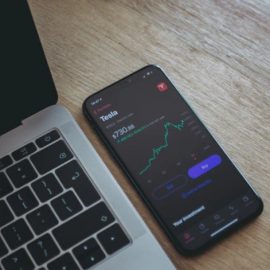

This article is an excerpt from the Shortform book guide to "Humanocracy" by Gary Hamel and Michele Zanini. Shortform has the world's best summaries and analyses of books you should be reading.
Like this article? Sign up for a free trial here.
What are the characteristics of proactive employees? Why are they important to a company?
According to business experts Gary Hamel and Michele Zanini, proactive employees take more initiative, which ultimately leads to solving more problems and greater success in a company. However, along with proactiveness comes the possibility of risks.
Read on to learn why Hamel and Zanini say proactive employees take companies from good to great.
Proactive Employees: Making Great Companies
Like Maslow’s famous hierarchy of needs, Gary Hamel and Michele Zanini describe the pyramid of business needs in their book, Humanocracy, as one in which each tier supports the tiers above it; in other words, you have to start at the bottom and work your way up. They say that the most successful companies are those that build all six tiers—including the top, human-focused tiers—into their business practices. In this article, we’ll describe the fourth tier, which explains the benefits of proactiveness in a company and how proactive employees contribute to an organization.
The Six Tiers of Business Needs
The six tiers are, in descending order of importance:
- Tier 6: Courage
- Tier 5: Ingenuity
- Tier 4: Proactiveness
- Tier 3: Proficiency
- Tier 2: Conscientiousness
- Tier 1: Compliance
Here we’ll describe the proactiveness tier of the authors’ pyramid and why proactive employees are crucial to an organization. Breaking out of rigid, bureaucratic habits requires employees who are willing to take the initiative: to go beyond their basic job responsibilities to solve problems and improve the company. It also requires a company that will allow them to do so.
(Shortform note: Proactive employees and new initiatives won’t always lead to the desired outcomes—in fact, your company might go through many failed attempts before finding an idea that works, solving a problem, or improving the organization. However, bear in mind that even a failed idea can be valuable: Each failure is a chance to learn and is therefore a step toward achieving your ultimate goal of running a company that’s both profitable and fulfilling for its workers. In other words, don’t give up on building a human-focused company just because some of your employees’ initiatives don’t pan out as you (or they) had hoped.)
Proactiveness is closely related to the next level, ingenuity: having the creativity and intelligence to not just take the initiative, but also to do so effectively. An employee who’s proactive but not creative might take it upon himself to fix a problem and accidentally make it worse, or he might spend an unreasonable amount of time and energy fixing the issue when a more efficient solution is possible.
(Shortform note: How can you tell whether an employee’s idea will be effective and efficient? One possibility is to use the “Three S’s”: Is the idea a solution to a real problem? Is it the simplest solution available? And has this idea been shared with peers to refine it and look for possible weaknesses? If an idea meets all three S’s, then it’s likely to be worth pursuing.)
Finally, the highest level of the pyramid of business needs is courage: being prepared to formulate and implement risky ideas and solutions. Courage is what allows employees to truly innovate; to put themselves on the line, try new things, and accept the results whether they’re good or bad.
| The Barbell Model of Risk Management A great deal of Humanocracy is about the importance of taking risks, but Hamel and Zanini don’t offer much advice about how to do so safely or effectively, which is important to know for proactive employees who are willing to take risks and innovate to find a solution. In Antifragile, risk analyst Nassim Nicholas Taleb describes what he calls the “barbell model” of risk-taking: implementing a combination of extremely safe, conservative measures and extremely high-risk, high-reward decisions. To use the barbell model, begin by figuring out exactly how much you can afford to lose (in terms of money, employees, property, and so on). Then, gamble those losable resources on risky propositions that have the chance for enormous payoffs. The rest—the resources you can’t afford to lose—you must invest someplace safe, without worrying about payoffs or dividends. Taleb pictures this as like putting weights on either end of a barbell—investing in two extremes with significant distance between them (although real barbells should be balanced, and this model doesn’t necessarily suggest splitting your resources 50/50). For example, an individual following the barbell model might put 90% of his money into a safe but low-interest savings account. He could then use the remaining 10% to play highly volatile stocks. If one of his stocks pays off, he could make enormous profits—if they all fail, he’s only lost the money he’s already decided he can afford to lose. When using this model, avoid middle-of-the-road compromises at all costs. Just like you wouldn’t put weights in the middle of a barbell, don’t put your resources into schemes that only offer moderate payouts while still running the risk of losing what you’ve invested. Something like a 401k would be the middle-of-the-road option that Taleb suggests you avoid: Your savings won’t increase by much in a 401k, and you still run the risk of losing a lot of money to a market downturn. |

———End of Preview———
Like what you just read? Read the rest of the world's best book summary and analysis of Gary Hamel and Michele Zanini's "Humanocracy" at Shortform.
Here's what you'll find in our full Humanocracy summary:
- Why employee obedience and efficiency are not the most important traits
- How to create happier and more innovative employees
- The six-tier hierarchy of needs in human-focused companies






